Rising prices for raw materials, energy and heat, supply bottlenecks, inflation and increased regulatory requirements regarding sustainability are presenting numerous companies with special challenges. The team at the C. E. Schweig engineering firm knows not only how to efficiently manage all these issues, but also the financial advantages they offer, especially in the packaging segment.
The consequences of climate change, globally linked supply chains and the expectations of the market and society at large regarding responsible, ecologically friendly conduct on the market are shifting the economy’s focus toward sustainability. The complexity involved between the environment (E), social aspects (S) and responsible company management (G) is causing uncertainty among many decision-makers, as is the notion that sustainability is directly connected with increased costs.
By using the approach of “economic sustainability”, companies act within this complex environment more efficiently and obtain the positive aspects of sustainability such as savings on resources and energy, while preparing their companies for the future.Misunderstood ecological approaches in the packaging segment are causing transitions en masse from highly recyclable plastic packaging that features optimised raw materials to what is oftentimes not even functional pulp packaging. This increases costs and usually doesn’t bring any ecological benefits for the product and brand.
Economic sustainability observes the entire added value chain to achieve the optimum use of resources and energy at every phase. Value-stream mapping helps in making the right decisions here. It is important to first define the functionality of the packaging material or means to be used. For illustration purposes, the C. E. Schweig engineering firm has taken a closer look at commonly available multiple product packing units, including small packing units.
The functionality of one multiple product packing unit is the collective sale of ten or more small single product packages. The analysed products differed in regard to packaging material thickness (film/paper web) and requirements (in m2), and in their construction, i.e., the type of bag or wrapping, including sealing seams.
Extreme differences related to the resources used were observed in comparing the individual packing units. The smallest packaging weighed 2.1 g, while the heaviest weighed 8.1 g. The thicknesses of the packaging materials from which the packaging (bag or wrapping) are made are not oriented on the weight or the type of content: The lightest packaging with the least packaging material thickness has to bundle a greater product weight than the heaviest. This means that resources are used here that are not functionally necessary and that unnecessarily cost money.
Given that a year has just passed of low raw material availability and drastic price increases, it is economically relevant to limit the use of raw materials to what is absolutely necessary (effective). The reasons are obvious: The raw materials used cause not only costs for their purchase as well as for their disposal, and the processing of a thicker film generally goes hand in hand with higher levels of energy use in the moulding/filling/sealing system. A packaging material that is more than 50% thicker results in significantly higher energy costs in the packing machinery, all at current high energy prices.
Thicker packaging materials generally also exaggerate the product size, which is good for the “Shelf Impact”, the effect it has on the shelf, but is unfavourable for the additional packaging because then the secondary and shipping packaging selected also usually have to be bigger. Here again, this means more material and subsequently higher costs that are not appreciated by customers, to say nothing of the fact that the intention of making small products appear larger by means of oversized packaging comes at the price of growing consumer disapproval and could possibly wind up being known as the “Most Fraudulent Packaging of the Year”.
It’s not just the applied material thickness that determines the volume of the sales unit and thereby the size of the additional packaging. It is also the construction of the collective packaging. In the analysed example, two varieties of rectangular single product packages are presented that are combined into a multiple product packing unit. While with one product, the single product packages are placed closely together and form a large rectangle which is then wrapped in a thin foil, for the other product a spacious paper bag is selected in which the small rectangular folding boxes are tossed.
For the same number of comparably sized single product packages, some 170% more material is used in the paper bag due to the inherent rigidity of the thick paper material. Thick, rigid packaging materials simply require more space to pack a specific volume. So it is not only the selected packaging material that is the cause of significantly higher acquisition costs, but also the thickness and the space required by the selected material that increases the financial impact.
Packaging material thickness comparison: The wrapping film fulfils its job with 26% of the operating weight of the paper bag. Unpleasant side effect: Given the higher weight and use of resources and energy, the paper packaging in question here provides poorer functionality than the wrapping film, because the folding cartons in the paper packaging are sometimes damaged, causing individual products to fall out and requiring goods to be written off.
It is true that many marketing decision-makers argue that products receive value through oversized packaging materials, and that certain packaging materials are particularly sustainable. Clarity and therefore decision security regarding the genuine ecological and financial impact of different types of packaging material and means options can only be achieved through the clean calculation of all the ecological and financial criteria throughout the entire added value chain, i.e. from the production of the raw materials through to their recycling.
For those for whom calculations, value-stream mapping and scoring systems are too much trouble, a look at the draft of the new European Packaging Directive (PPWD) is recommended. The directive pursues the topic of resource use and the oversizing of packaging with extensive technical documentation. So why wait to convert to genuinely sustainable packaging materials and options and secure rewards? Now is the time to reduce costs and take advantage of the associated ecological benefits as a USP to promote sales. These kinds of sustainability efforts are also supported in the PPWD and in the Green Claims guidelines and those of the CSRD (Corporate Sustainability Reporting Directive). Combining cost savings with verifiable, reliable rewards creates security for the future and market relevance.





